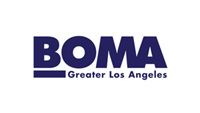
Remodeling a rented commercial property can improve functionality, attract customers, and enhance workflow. However, without proper planning, it can lead to legal conflicts, unexpected costs, and disputes with the landlord. Before starting renovations, review lease agreements, get approvals, and select cost-effective, reversible upgrades. Upgrading a rental space differs from remodeling an owned property. Tenants must work within lease restrictions, avoid damaging permanent structures, and sometimes restore the space when the lease ends. Without careful planning, renovation can become a financial burden instead of an asset.
Reviewing Your Lease Agreement: Understanding the Boundaries
Lease agreements define modification limits. Many landlords restrict major renovations, especially those affecting the building’s structure. Some agreements allow cosmetic upgrades, such as painting or lighting changes, but prohibit structural modifications.
The lease should outline:
- Permitted modifications and what requires approval.
- Restoration obligations when the lease ends.
- Who covers costs—landlord or tenant.
If the contract requires returning the property to its original state, prioritize temporary or reversible changes. Seek legal advice if the terms seem unclear. Pay attention to this, especially if leasing your first commercial property. Violating lease terms can result in penalties, legal disputes, or eviction.
Landlord Approval: Avoiding Costly Mistakes
Not to mention, making unauthorized changes can lead to serious consequences. Some landlords are flexible if renovations increase property value, while others are strict.
A well-prepared renovation proposal improves the chances of approval. Include:
- Detailed descriptions of planned changes.
- Material lists and estimated costs.
- Benefits to the property, such as increased functionality.
Landlords may agree to cost-sharing if the upgrades add long-term value. Always get approvals in writing to avoid misunderstandings. Without authorization, tenants risk paying for removal costs if changes violate the lease.
Improving Air Quality with Regular Air Duct Cleaning
Indoor air quality directly affects employee productivity and customer comfort in a rented commercial property. Over time, dust, allergens, and pollutants accumulate in air ducts, reducing air circulation and increasing health risks.
That’s why regular air duct cleaning is important. It improves ventilation, lowers energy costs, and prevents HVAC system strain. Clean air ducts enhance indoor air quality by reducing airborne contaminants that can cause allergies and respiratory issues.
Landlords may have HVAC maintenance schedules, but tenants should verify cleaning frequency and request additional services if needed. Investing in professional air duct cleaning ensures a healthier environment and more efficient air circulation in the workspace.
Budgeting Smartly: Maximizing Investment Without Overcommitting
Of course, setting a budget prevents overspending. Consider:
- Essential vs. optional upgrades.
- Projected return on investment (ROI).
- Duration of lease compared to renovation costs.
Spending large amounts on a short-term lease may not be wise. Prioritize cost-effective upgrades that improve efficiency and customer experience. Consider tax-deductible expenses, as some renovation costs may qualify for business tax deductions.
Unexpected expenses often arise. Allocate extra funds for emergencies. A solid budget keeps renovations affordable and aligned with business goals.
Choosing Temporary and Reversible Upgrades
Besides, landlords often require tenants to restore spaces to their original state. Temporary renovations prevent future restoration costs.
Smart, non-permanent solutions include:
- Modular partitions for flexible space layouts.
- Peel-and-stick wallpaper instead of permanent paint.
- Adjustable lighting instead of rewiring fixtures.
- Freestanding displays and furniture for branding.
These options enhance aesthetics and functionality without violating lease agreements. Investing in adaptable improvements ensures a smoother transition at the end of the lease.
Compliance with Building Codes and Permits
As an illustration, failing to follow local regulations can result in fines, legal action, or forced removal of modifications.
Confirm that renovations comply with the following:
- Building codes and safety regulations.
- Electrical and plumbing permit requirements.
- Accessibility standards, including ADA compliance.
Ignoring permits can delay projects, increase costs, or lead to legal penalties. Hire a contractor who understands local building laws to ensure compliance. Skipping this step can result in the forced removal of unauthorized modifications.
Minimizing Business Disruptions During the Remodel
Another key point is that renovations can disrupt daily operations and cause revenue loss. Careful scheduling reduces downtime.
Effective strategies include:
- Renovating in phases to keep part of the space functional.
- Working after business hours to avoid customer disruption.
- Communicating updates to employees and customers.
Consider setting up a temporary workspace or offering remote services if major renovations are required. Clear planning minimizes financial loss and customer inconvenience. Also, there are ways to refresh your commercial space for cheap, so not everything needs to be a major renovation.
Energy Efficiency and Sustainability Considerations
Sustainable upgrades can reduce operating costs and appeal to eco-conscious customers. Consider:
- LED lighting to cut electricity bills.
- Energy-efficient appliances to lower power usage.
- Low-VOC paints and materials for better indoor air quality.
Some landlords may support green renovations if they reduce long-term property maintenance costs. Investing in energy-efficient improvements benefits both the business and the environment.
Branding and Aesthetic Upgrades
A well-designed commercial space reinforces brand identity. Use branding elements that are easy to remove at the end of the lease. Effective branding upgrades include:
- Wall decals and artwork instead of permanent murals.
- Custom furniture that reflects company colors and style.
- Portable signage for flexibility.
These upgrades enhance customer perception while ensuring compliance with rental restrictions.
Optimizing Space for Better Workflow and Efficiency
Space design impacts productivity and customer experience. A remodel is an opportunity to:
- Improve layout for better traffic flow.
- Enhance lighting to create a welcoming atmosphere.
- Upgrade storage solutions for better organization.
Prioritize functionality over aesthetics. A well-optimized space improves employee efficiency and customer satisfaction, leading to better business performance.
Restoring the Space When the Lease Ends
With this in mind, prepare for restoration obligations before the lease expires. Some contracts require tenants to remove all modifications before vacating.
Best practices include:
- Keeping documentation of approved changes.
- Saving receipts for restoration expenses.
- Negotiating with the landlord to keep beneficial upgrades.
If upgrades increase property value, landlords may allow them to remain, reducing restoration costs. Planning avoids last-minute expenses and ensures compliance.
Summary: Transforming a Rented Commercial Property Within Legal and Financial Limits
In short, remodeling a rented commercial property requires careful planning, lease compliance, and financial discipline. Strategic upgrades enhance business operations without legal complications or excessive costs.
Following lease agreements, securing landlord approval, and using reversible modifications create a functional, attractive, and legally compliant workspace. A well-executed remodel improves efficiency, customer experience, and business success while protecting investments.


